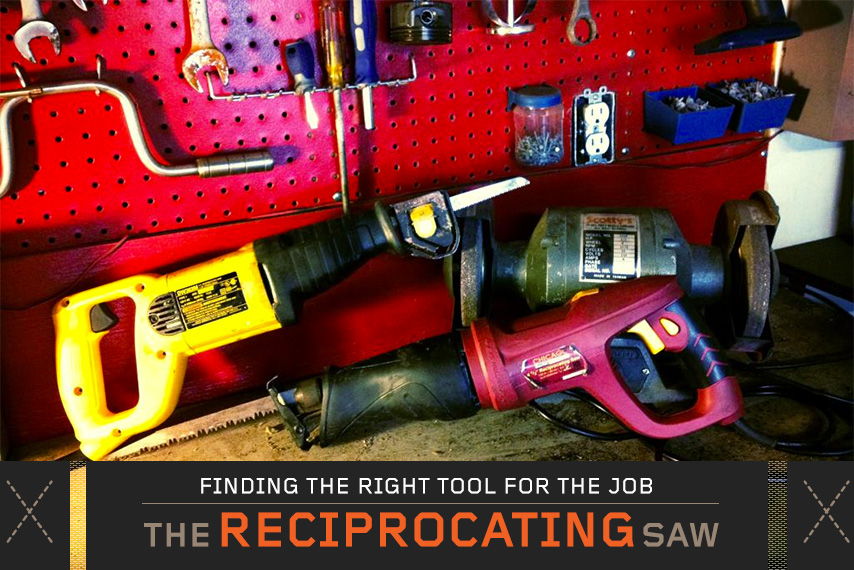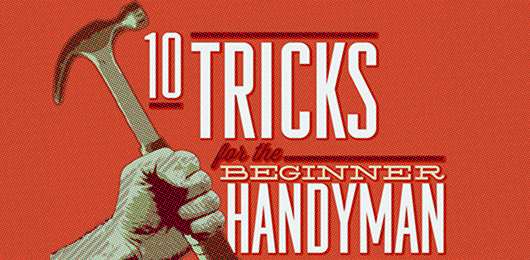On the whole, our generation (30 and below) has not had the need to become as familiar with tools as our fathers and grandfathers. In Primer’s continuous journey to help young men become knowledgeable, self-sufficient, and productive members of society, we are bringing you a short series on tools you may recognize by name, but are unsure of their use or, if you need to own them.
We’re kicking the series off with my personal favorite power tool, the reciprocating saw. Commonly known as a sawzall (pronounced “saws-all “. This is actually the official model name of Milwaukee’s reciprocating saw), this is the first power tool that I ever purchased with my own money.
The reciprocating saw uses a detachable blade, which is pushed and pulled back and forth at a very high rate of speed when you pull the trigger. The power comes from either a battery pack or standard wall socket, depending on the model. Yes, it is slightly more complicated than that, but those details don’t affect the outcome. What does it cut you ask? Well, just about anything you can think of really. By using the proper blade, you can cut wood, PVC pipe, drywall, and even metal.
The reciprocating saw is a great all around tool. My family used ours so much, we ended up buying two! They can be used to trim limbs from trees, remove a damaged piece of PVC pipe, cut out an old door or window frame, or even cut off an old muffler or tailpipe. Another common use is to cut the nails that hold the tread to the riser when repairing stairs. The tread is the part you step on, and the riser is the part that your foot hits and causes you to trip. I’ve also used mine to cut down small trees, and even cut off the roof from my 1988 Ford Bronco 2 trail truck!
Cutting isn’t the only thing the reciprocating saw can do either. Several companies now make attachments that go into the blade slot and can be used for busting up grout and removing tile. There are also wire brush attachments that could be used for…well, I don’t know. Restoring an old piece of farm equipment maybe?
This saw tends to lend itself more to the demolition side of jobs, but in a pinch you can use it to cut boards to the proper length. Just know going in that making a straight cut more than a few inches long takes practice.
With everything this tool does, it sounds like the perfect saw right? Well, not exactly. Most of them are a little bulky. Both of ours are about 18” long, without the blade. My dad’s Harbor Freight saw weighs about six pounds, and my DeWALT model is closer to nine. These are definitely two-handed tools if you want to use them safely. There are some reciprocating saws that are smaller and are able to be used with just one hand, but since the saws are smaller, the jobs they can take on are smaller too.
If you plan on getting into DIY home improvement projects, or if you just want a saw that will cut through just about anything, then I say go for it. The first time you use it, you’ll love it. However, if you live in a rental, you probably don’t need to put this at the top of your Christmas list.
While I believe that you get what you pay for, I also believe that there is no reason to buy more tool than you need. Many of the reciprocating saws you’ll find at Lowe’s or Home Depot are professional grade tools. While you won’t have to worry about burning them out, you’ll also spend about $50 to $100 more than you really need to. I bought my DeWALT for about $75 (factory refurbished) twelve years ago, and it’s still running strong. My dad bought his at Harbor Freight for about $25 (with a coupon) about four years ago, and it hasn’t missed a step either.
The main differences you’ll find across the board are power type, amperage of the motor, stroke length, and speed.
- Power type is simple. Either it plugs into the wall, or it uses a battery pack. Battery packs allow you the freedom of not being tethered to the wall, but they also go dead, usually at the worst time. Personally, I use the plug-in models, and just use an extension cord.
- Amperage refers to the amount of wizardry that the electricity consumes while moving parts of the motor. This is one of those factors that doesn’t really play in to most user’s situations. My saw is a 7.5 amp which, by simply browsing the tool aisle, would lead you to believe is a “baby” model. Like I said before though, twelve years of hard use and no problems.
- Stroke length is the amount of travel the blade has. The more travel the blade has on each pass, the more teeth travel across whatever you’re cutting, the faster it cuts through. Don’t get too hung up on this though. Stroke length usually ranges between 7/8th of an inch to 1 1/8th inch. That’s just a ¼ inch difference.
- Speed is the amount of strokes the saw makes in a minute. The more strokes per minute, the faster it cuts.
Ultimately, for most casual users, dad’s cheap Harbor Freight model will work just fine. What makes the most difference is using high quality blades. Unfortunately, that’s too much to get into right now. To keep it simple, you can buy your saw at Harbor Freight, but buy your blades at Lowe’s or Home Depot.






















